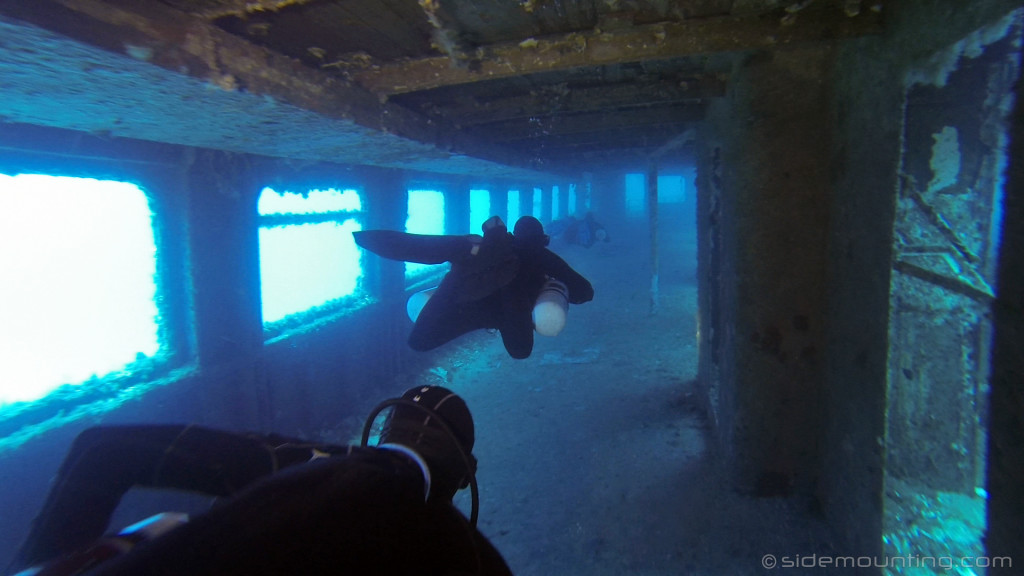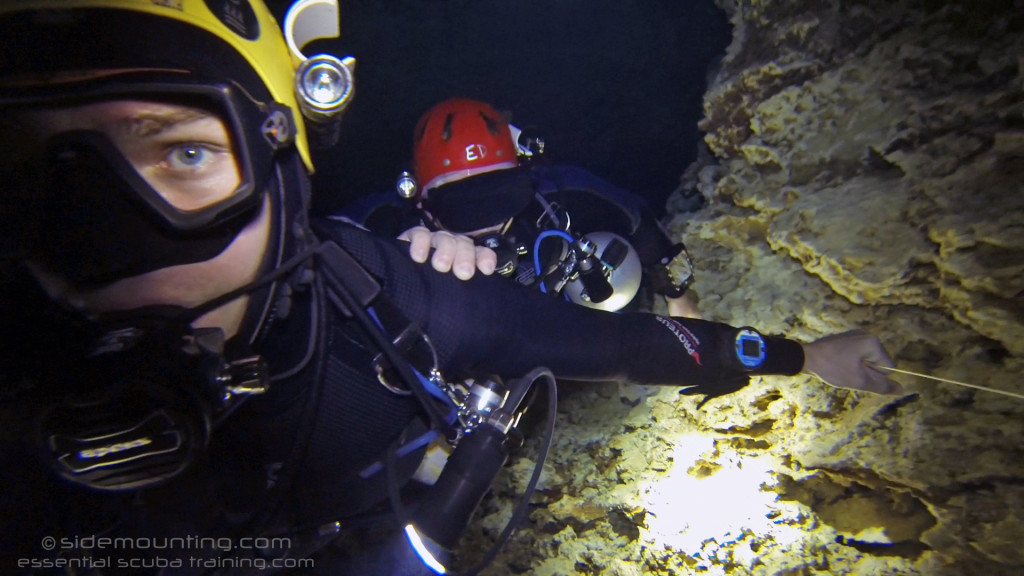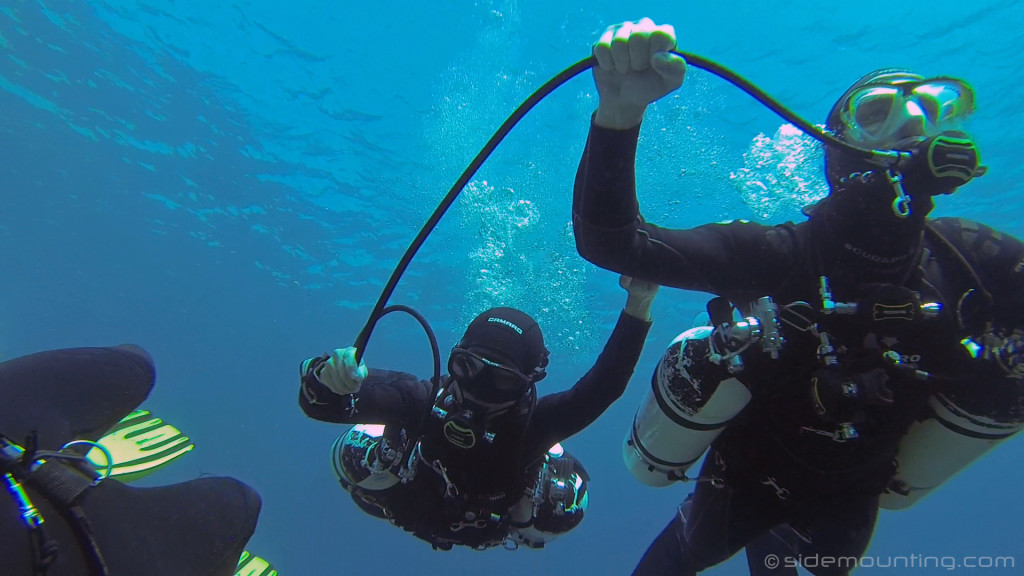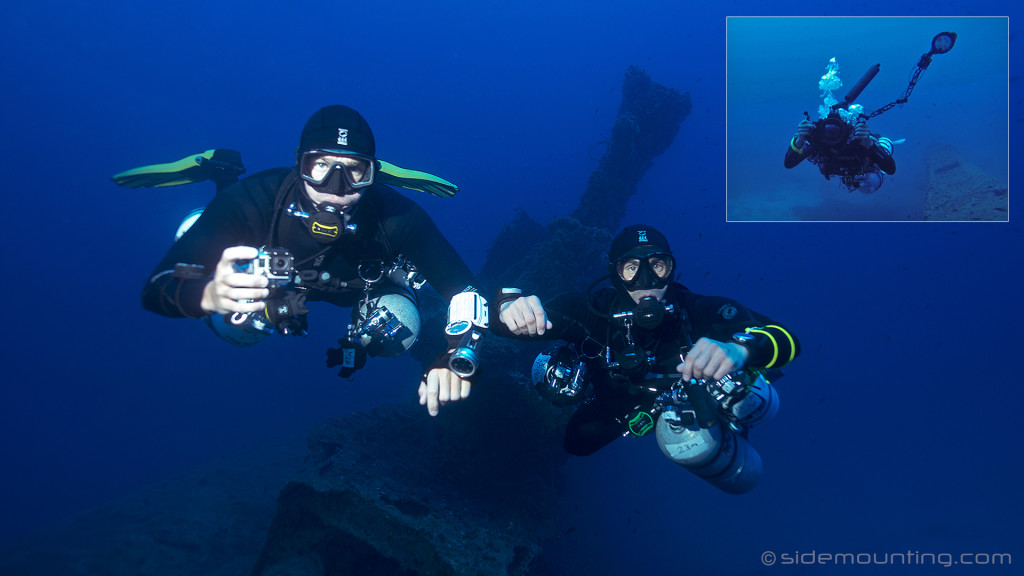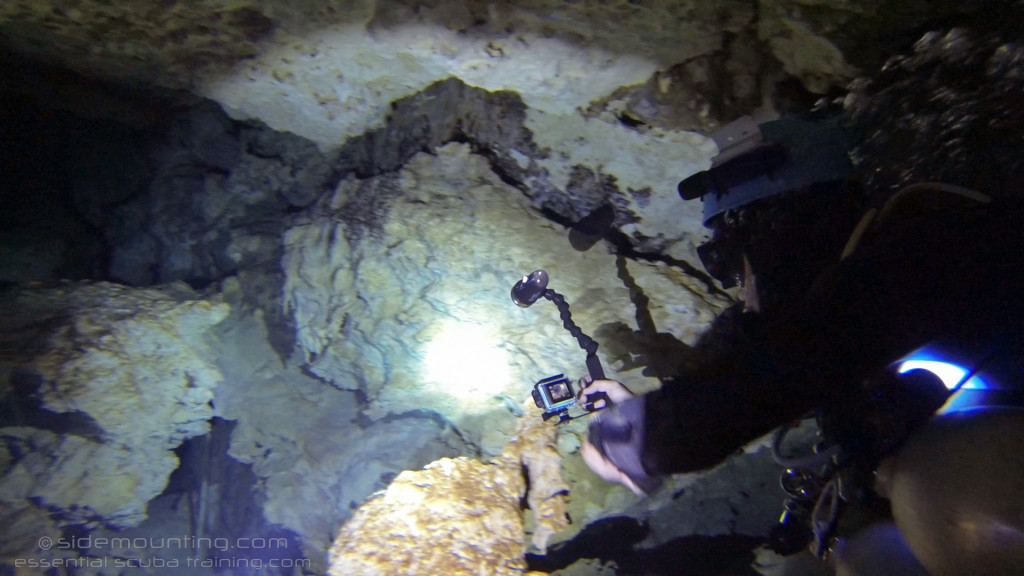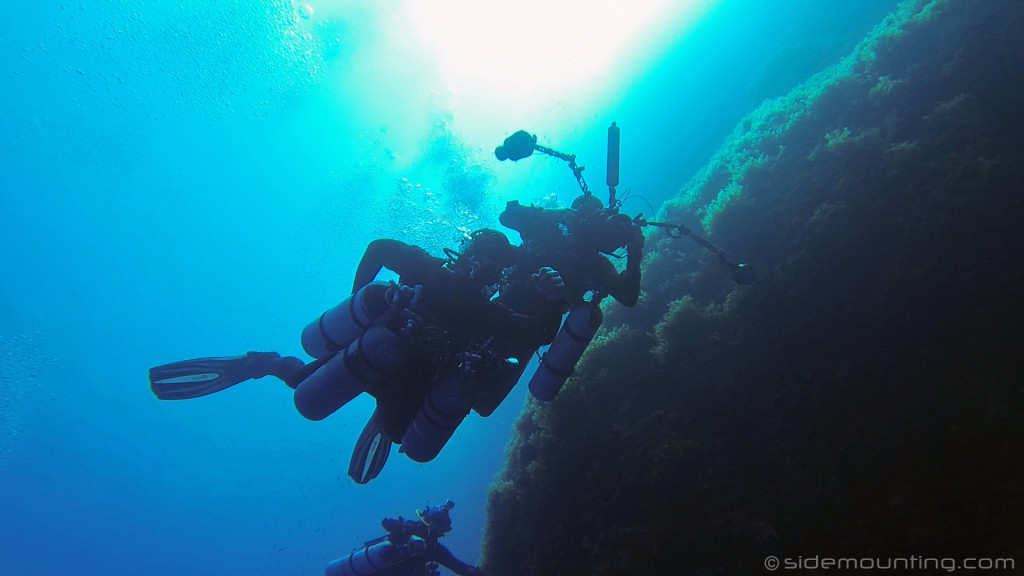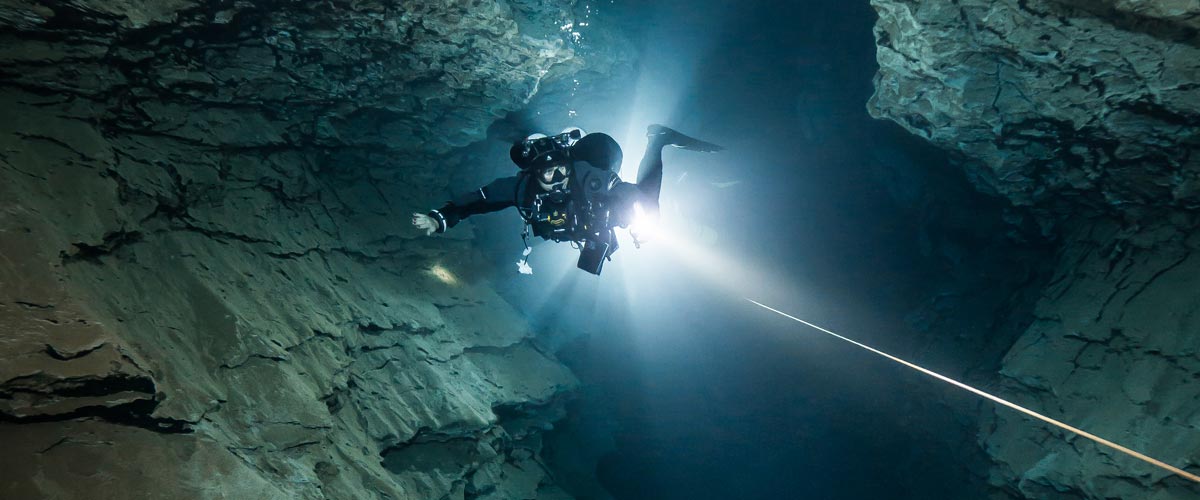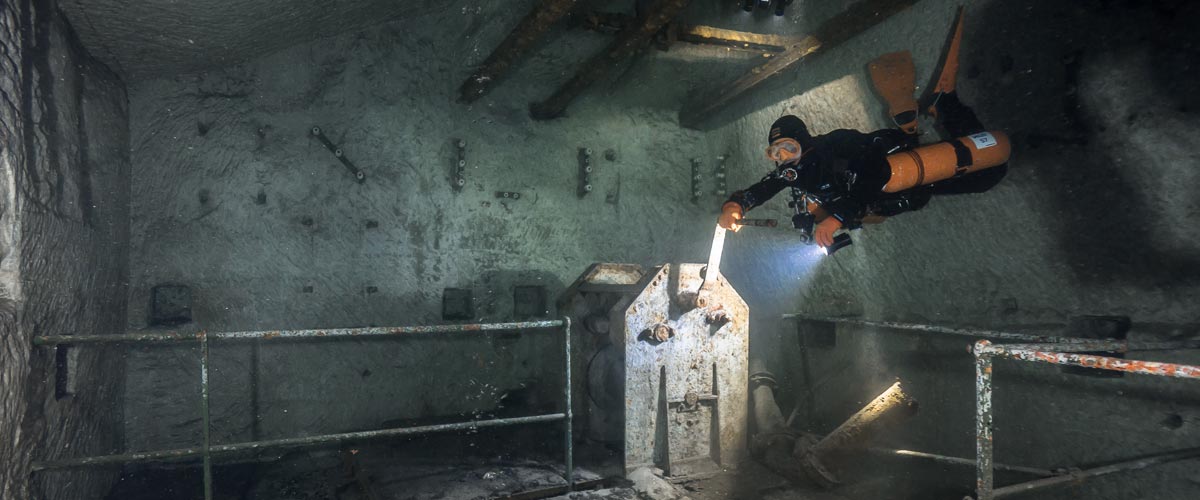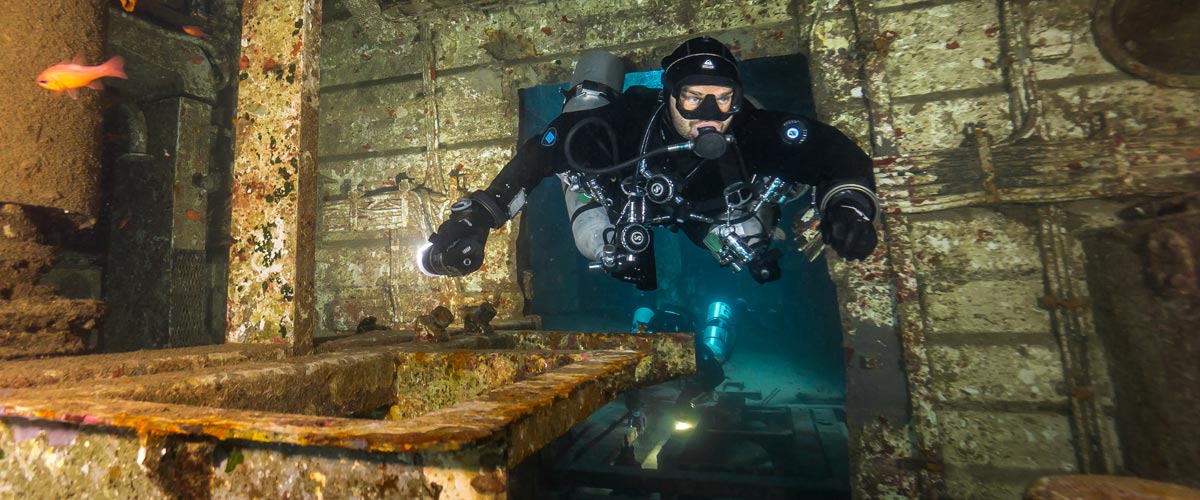Dive Training Blogs
Effectiveness of video recording divers in training
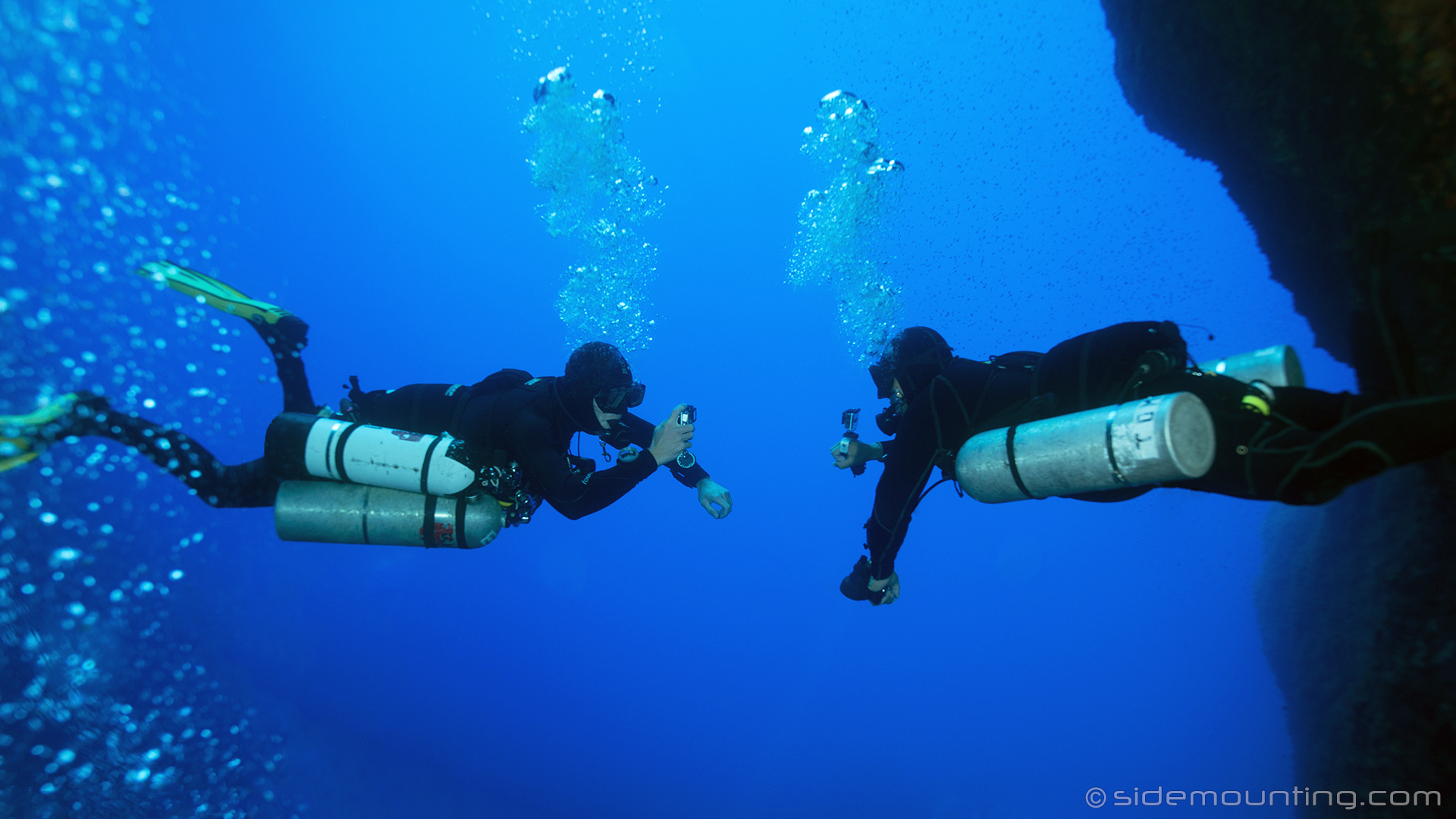
“To video or not to video, that is the question”
Let me start by saying that I use video to record all my students during their training courses. It all comes down to how much quality & value you as the instructor want to add to your courses..? I really believe that if all instructors do not start using video reviewing techniques they will soon find that they will start losing customers – and rightly so!!
This article is to explain the reasons why I choose to use video and give some tips and tricks on the best ways to do it and how to handle the additional problems and concerns with shooting video.
As HD video cameras are getting smaller and smaller, plus relatively low in cost and easy to use, an instructor these days does not have much choice than to shoot video really… if they do not students will most likely turn up to class with their own cameras, which means the students focus will always be on taking videos/pics for sharing with their friends on YouTube and Facebook rather than what they should really be focusing on – learning to dive correctly.
People want memories and they get them by documenting, recording & sharing everything they do or are going to do… this is, after all, a facebook world we live in!!
If an instructor did not offer you video recorded feedback during any advanced diver training levels (meaning anything after your open water course) I would advise you not to take training with that instructor. Why? For the simple reason they either do not understand the advantages what video feedback brings or they are not that capable as an instructor to get you looking good enough to be on video at the level they are training you at!
Important note: If a diver is just learning to dive – for example, doing a discover scuba dive or open water training dive – then I would not advise that the instructor uses the video camera, instead have a professional assistant do any recording.
Advantages of having video feedback
- Allows the instructor to give each student detailed critique of their performance after dive (sometimes whilst underwater, if video camera has a LCD screen playback option and you have enough dive time).
- Students take more interest in their training i.e. they can see if their knee drops or fin blade angle is correct when learning to frog kick, or if they are maintaining trim and breathing control when not moving, etc…
- Giving video feedback greatly speeds up the daily learning process; when a diver views their videos they absorb the feedback in their own preferred style.
- Divers during training perform better as they always think they could at any moment be recorded, so emphasis is on doing skill correctly (performing well).
- Students being able to keep the videos after the course is also very important as the student now has a way to review and practice the correct techniques; this helps the student maintain the high standards set during training.
- Students will play a part in developing their own personalised training materials, which again ensures they continue to dive correctly after training. This is through skill retention as it may be a few weeks/months after their course before they can dive again, so having videos to review is crucial.
- Videos provide a cue/reminder that students can use to mentally rehearse and practice skill out of the water – much better than just in front of the mirror.
- In some cases having the student video record the instructor’s demonstration can really add value during the video debriefing session, and again for the student to bench mark themselves against the instructor after the course.
Good example of effective use of video recording
Let’s look at teaching a diver to backwards kick (usually it takes 2 days to learn):
- Diver receives a thorough briefing including video of the ideal technique & completes dry land simulations of this skill.
- Diver then watches a live underwater instructor demonstration of the skill.
- Diver then attempts the skill (instructor video records student).
- Instructor first demos what the student just did incorrectly and then re-demos what the student needs to change (student video records instructor).
- Now the student tries again (instructor video records student).
- Rest of dive is completed, without diver having unnecessary repetition and frustration.
- Diver reviews the both the student and instructor videos on land after dive and sees what actually happened, leaves then with a clear understanding of what is needed for improvement (skill mastery).
- Diver then (next day) when fresh repeats skill and effectively builds the correct technique as they fully understand what they were doing incorrectly (this maximises there learning curve and training time).
I have found this 8 step method works very well for all skills and the majority of my students are capable of doing some effective back kicking on the 2nd day. Prior to video reviewing I have had much less success and found that it requires a lot more time/dives and much more frustration on both the student & instructor when learning.
Should I video everything..?
No. To be honest this results in too much debriefing time and detracts what can be efficiently learnt each day. I suggest you apply common sense when wondering how much to shoot and very quickly you will get feedback about this.
Best parts to make sure you video are if say a student has a difficulty with understanding what is expected of them, for example they always do a great valve shutdown exercise but at the end they always forget to check which regulator they are breathing from and how much gas in now in both cylinders.
Instructors need to move with the times
“Those who can do, those who cannot teach!! Those who can and do are instructors.”
All instructors should be comfortable and ready at any time to have any of their skill demonstrations video recorded and later analysed by their students. I think doing this is great as it really raises the bar for instructor demonstrations and for sure levels the playing field for students comparing their skills to their instructors and what actually needs to be mastered – “practice what you preach!!”
Does video recording have much impact on your students/instructors..?
Most students start a course saying they have never seen themselves underwater before, then by the end of training like it so much that they usually go straight out and buy themselves an underwater video camera. This is also true for every instructor who has come to me for training – they have seen so much value added using video reviewing they also go out and buy a camera, then say they will be using it for all their future courses too.
Why I think video cameras are not used by instructors
This article is not a review on different video equipment, so I speak from my 3+ years of training and my experience using all the models of GoPro cameras, which are very compact in size, easy to use and not an expensive investment (see pictures).
Over the years I have heard a lot of instructors say “carrying video equipment adds task loading, it’s bulky, gets in the way of diver training, plus it’s expensive!!”
Regarding the “task loading” issue – ask yourself who should be the most comfortable and least task loaded underwater during a training dive. Simple – the instructor. It’s their job to insure the environment they are training you in is suitable for the type of training they are conducting and using a small camera at key points during the dive should not be over task loading them, should it?
Instructors should only teach and make training dives in environments that are conducive to dive training – e.g. a low visibility dive site (only being able to see 1 metre) is not a suitable dive site for compass/navigation training. Actually, I would argue there is no point making a dive in those conditions for any reason, and for sure it is not safe!!
Any instructor that says it’s too expensive to buy video equipment probably is also charging a low amount or close to nothing for their training courses. So to any students out there reading this, please go with someone that offers value in training and they have a solid reputation in the field you’re looking at learning in.
If an instructor offers video feedback during training, they will not be worried about others seeing and critiquing their training methods/videos, so they are standing by the training they are offering, which is great.
Training workshops
Due to many requests, I have decided to offer workshops for divers and instructors on how to effectively use underwater video cameras as teaching tools. Some of the topics covered are setup and storing camera, video features, buoyancy training techniques, what to shoot and when, post dive video analysis and ways to best document and market your dives after training, and using your videos. Remember it is all about maximising your teaching effectiveness.
This article has a comments section below, so if people can put together structured questions or points for discussion on this subject, I will do my best to answer each point raised in detail as I am sure this article could have been 10+ pages long and branch off into some many other areas of diver training.
If you enjoyed the read and found it useful please say so and please share it with any other divers/instructors you think will benefit from it.
Thanks and stay tuned for my next article – it will be on a very important topic related to technical sidemount diving – that is all I can say for now 🙂
Blogs
Intro to Tech: What is it about?
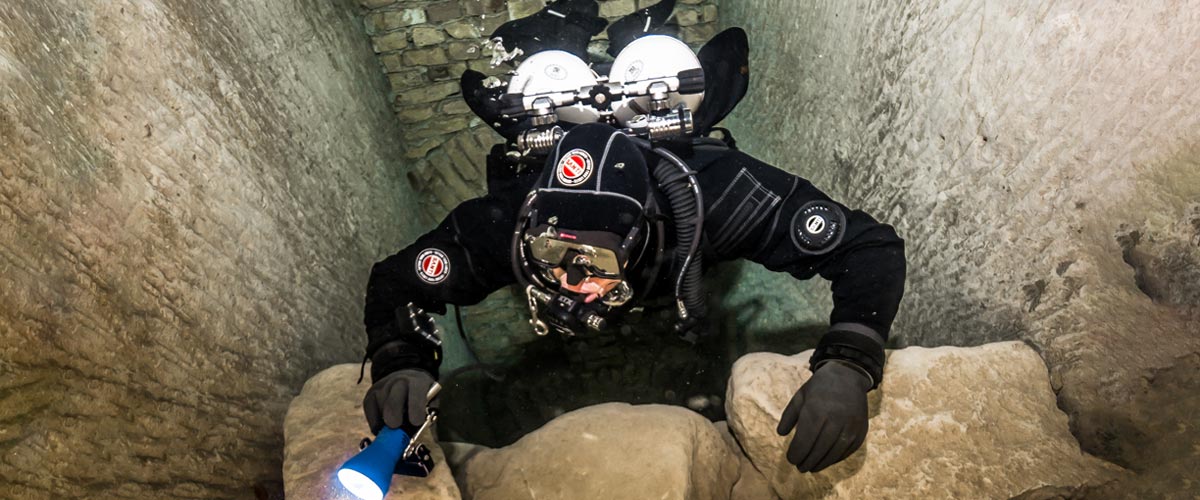
Article by José Pablo Mir
Pictures by Cezary Abramowski
The world of technical diving is exciting. It opens the door to new sites, depths, and bottom times. More importantly, it opens our minds to a new way of planning, facing, and experiencing dives, even those not purely technical.
Becoming a technical diver is a process, and like in other aspects of life, we should find the proper entry point that suits us best based on our knowledge and experience. The Introduction to Technical Diving course from TDI -the world’s largest and most recognized technical diving teaching organization- is the best option for divers who have yet to gain experience in the fundamental aspects of this new practice. The course’s content and its embrace of new techniques and technologies make it possible to acquire a solid foundation to learn and gain experience in this practice properly.
Becoming a technical diver is not something that happens overnight, whether deciding to become one or receiving a certification card stating we are now technical divers. It is a slow process extending farther away than any introductory course. It requires effort and dedication. But it will bring us satisfaction from day one -or two.
It is a matter of mentality
First, we must understand and accept that technical diving, involving greater depths, longer bottom times, exotic gases, virtual or real ceilings, and more, comes with higher levels of risk than the sport diving we have been practicing until now.
Although this discussion usually starts with a warning about risks, as I’ve done in the previous sentence, our practice is not a game of chance.
Technical diving is a rational activity that requires maturity and good judgment, and we will put everything into ensuring that each dive is a successful one -meaning we return from it safe and sound. With this understanding, we will strive to establish a mental attitude more aligned with our practice and its realities.
This new “technical diver” mindset we will develop will lead us to be more cautious in our executions, more analytical in our plans, more rational in our strategies, and more detailed in our procedures.
Experience will keep teaching us to know ourselves better, to keep our anxiety and other emotions under control, and to manage our impulses. Over time, our senses will sharpen, and we will be more attentive to the particulars of the situation we find ourselves in.
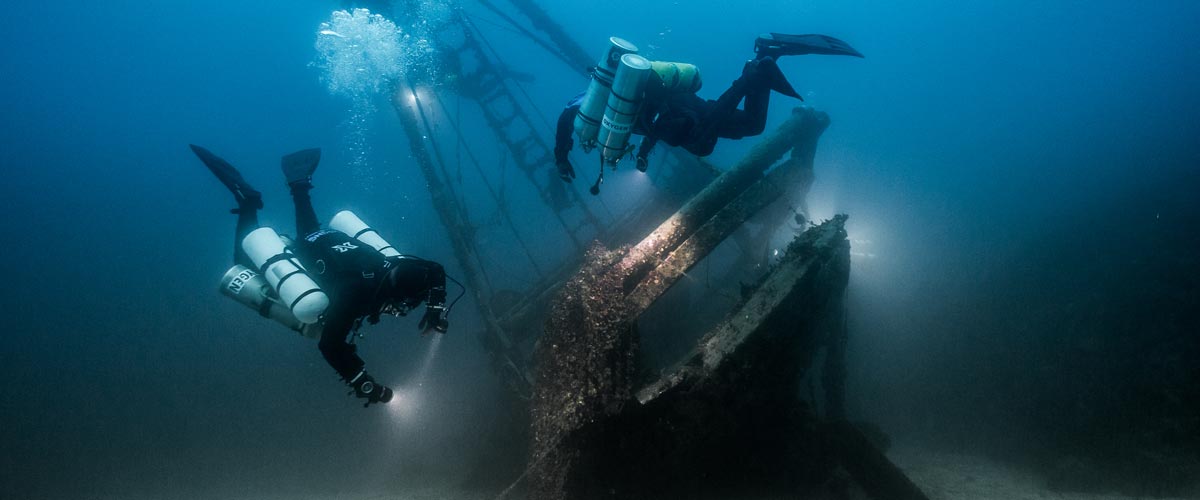
Strategies and procedures
Our strategies, those broad guiding lines tracing the path to follow, from how to approach planning to where, with what, and how we are willing to get there, will be more specific and more practical. Not because they magically become so, but because we will consciously and deliberately frame them that way.
We will establish clear, concise, and realistic procedures. Not only for the undesirable situations that may present themselves but also for those that are part of our dive objectives.
Even though, as technical divers, we often use equipment different from what we were previously accustomed to, it is essential to note that the gear does not make the diver. In a way, we could consider such equipment as the necessary tools to implement what our goal seeks to achieve, according to our strategies and procedures.
Technique plays an important role
We must put our greatest effort into learning and perfecting the different techniques we will be acquiring. Buoyancy, trim, propulsion, cylinder handling, deploying DSMBs and lift bags, valve drills, and more are essential skills we must begin to master to progress in our art. What we cannot do, when we need to do it, can harm us.
Our techniques must be effective and achieve the purpose for which they were devised. But they must also be efficient and require the least resources possible, including the time they take and the effort they demand. Effectiveness and efficiency will prevail over beauty and other considerations that may come to mind, although none of them should be mutually exclusive. A technique executed efficiently and effectively tends to have an inherent beauty.
Refining techniques is a lifelong mission. Some of them will be easy to master from the go; others, on the other hand, will be our life mission and will require many repetitions just to resemble the idea we have in mind of how they should be executed.
We must consider the environment
Our learning, the needs and musts of the practice we engage in, the experience we gradually gain, our strategies and procedures, and even our equipment and tools change with the environment.
Diving in the ocean, everything about us must be suitable for ocean dives. Conditions there rarely emulate those found in a pool, lake, or river. Variable winds and currents, greater depths, visibility conditions, other divers with uncertain skills around us, marine life, maritime traffic, distance from the coast, and many other factors add complexity and uncertainty.
It is never necessary to master the pool on the first day, but planning and aspiring to gradually cope with the ocean’s conditions is essential.
The cost of good training
We are aware that our resources are often scarce in relation to the possibilities of use we could give them if they were not. To a greater or lesser extent, we are part of the economic reality in which we are embedded.
Fortunately, the cost of good technical diver training is not an entry barrier. Comparing training and equipment costs, we see that the former are generally lower. Yes, lower cost for personalized service, essential to our future
performance and safety, than for a series of mass-produced products that are mere, albeit necessary, tools for an end.
The value of good training
The value of the training we received encompasses a range of characteristics, from emotional and methodological to technical and technological. TDI and its Introduction to Technical Diving course offer a deep and modern approach, with a teaching strategy that aims to create thinking divers, not merely obedient ones.
As technical divers, our knowledge is our primary tool. In this type of activity, what we don’t know can harm us.
Is this course optional?
Unfortunately, the fact that this Introduction to Technical Diving course is not a prerequisite for any subsequent training is an invitation to consider it optional. And we all know what usually happens to “optional” under budget constraints.
However, this course should be seen as optional only by those divers who are somehow familiar with the use of technical equipment, who have a mindset more in line with the requirements of this type of diving, who plan and execute the dives the proper “technical” way, who know their gas consumption rate, who are not intimidated by non-decompression tables, who feel comfortable using their dive computers, and know the techniques and have at least an acceptable level of buoyancy, positioning, and propulsion. Those can go straight to a more advanced training course, such as TDI’s Advanced Nitrox.
We must ask ourselves whether or not we are in that group.
Remember our goal: to have fun
Recreational diving is our passion. Jumping into the water carrying heavy equipment and having properly dotted our I’s and crossed our T’s have only one ultimate goal: fun. This is the activity we have chosen as a hobby. We must enjoy it; it must give us pleasure and make us vibrate.
Having a good time is not optional!
Blogs
Four opportunities to go pro in 2024 with Dive Friends Bonaire
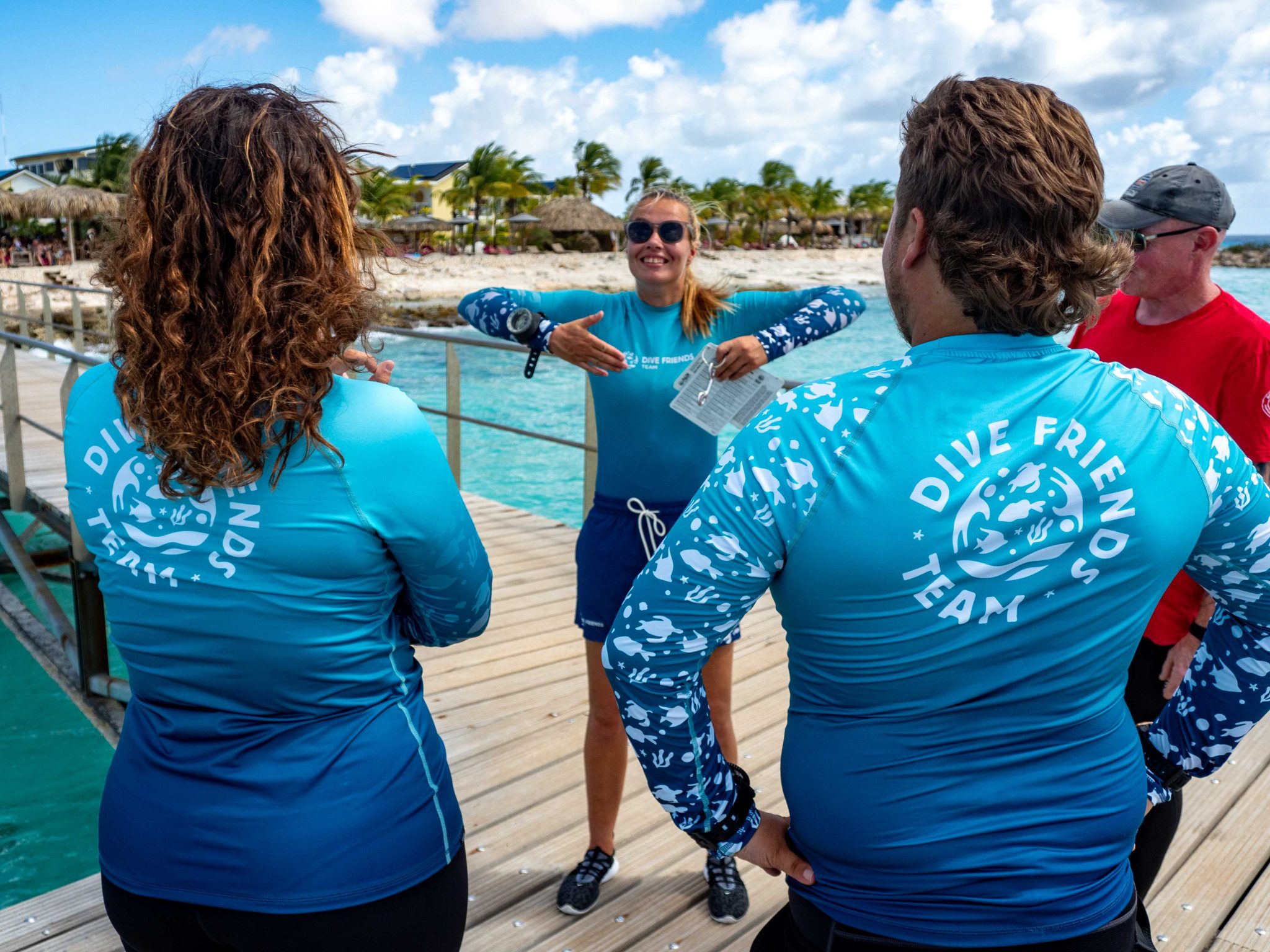
Dive Friends teaches the Instructor Development Course (IDC) several times a year to students who are eager to share their passion for diving with the world.
Dive Friends is known for the personal approach throughout the course. Their in-house course director will lead the students through every essential step, mentoring them to achieve their fullest potential as a dive instructor.
Applications for the following IDC start dates are now open:
- 12 April
- 5 July,
- 20 September
- 29 November
Partnership with Casita Palma
If the student opts for the IDC-Deluxe or IDC-Supreme package, their accommodation will be arranged for them at Casita Palma. This small and quiet resort is within walking distance from Dive Friends Bonaire’s main dive shop location and has everything you need to relax after an intense day of IDC training. Breakfast is included, so the student will always be fuelled and ready for their day.
Contact Dive Friends Bonaire’s Course Director Eddy for more information: coursedirector@divefriendsbonaire.com.
-

 News3 months ago
News3 months agoHone your underwater photography skills with Alphamarine Photography at Red Sea Diving Safari in March
-

 News2 months ago
News2 months agoCapturing Critters in Lembeh Underwater Photography Workshop 2024: Event Roundup
-

 Marine Life & Conservation Blogs2 months ago
Marine Life & Conservation Blogs2 months agoCreature Feature: Swell Sharks
-

 Blogs2 months ago
Blogs2 months agoMurex Resorts: Passport to Paradise!
-

 Blogs2 months ago
Blogs2 months agoDiver Discovering Whale Skeletons Beneath Ice Judged World’s Best Underwater Photograph
-

 Gear News3 months ago
Gear News3 months agoBare X-Mission Drysuit: Ideal for Both Technical and Recreational Divers
-

 Gear Reviews2 months ago
Gear Reviews2 months agoGear Review: Oceanic+ Dive Housing for iPhone
-

 Marine Life & Conservation2 months ago
Marine Life & Conservation2 months agoSave the Manatee Club launches brand new webcams at Silver Springs State Park, Florida


